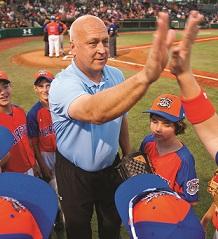
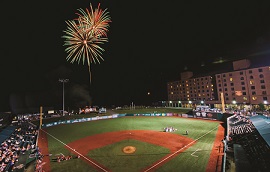 In the U.S., no sport has a more unique and storied history than baseball. While the roots of baseball go back centuries, it was in the 1800's when the game’s popularity started to take hold in this country. By the time of the Civil War in the 1860's, journalists were already calling baseball the “national game” and the “national pastime.”
In the U.S., no sport has a more unique and storied history than baseball. While the roots of baseball go back centuries, it was in the 1800's when the game’s popularity started to take hold in this country. By the time of the Civil War in the 1860's, journalists were already calling baseball the “national game” and the “national pastime.”
More to the point, what other sport has produced such uniquely iconic venues for the professional game? The two oldest—Fenway Park in Boston, built in 1912, and Wrigley Field in Chicago, built in 1914; the old Yankee Stadium in New York, the old Tiger Stadium in Detroit. Even newer Major League Baseball facilities are quickly ingrained in the sports consciousness of Americans: Dodger Stadium in Los Angeles, The Coliseum in Oakland, Oriole Park at Camden Yards in Baltimore and Citi Field in New York. Often, these baseball venues become destinations themselves.
While it’s often too tempting to play off of the line from the movie, “Field of Dreams,” (“If you build it, they will come”), there’s undoubtedly something irresistibly appealing about a well-manicured baseball field—green grass gleaming in the sun, reddish-brown infield groomed to perfection, white chalk lines reaching out to the home run fence, the whole expanse just waiting for the nine to fan out into their positions.
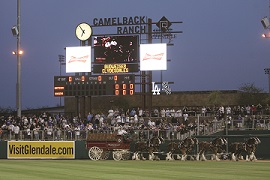
While many athletes start out challenging their friends on their neighborhood sandlot, beautiful facilities abound to host all levels of play. Around the country, whenever sports complexes are built or refurbished, it’s a sure bet you’ll find a diamond – or several of them.
Glendale, Arizona
The baseball hub in Glendale, located just north and west of Phoenix, is the Sonoran Desert-inspired Camelback Ranch–Glendale, with 13 full baseball fields and three half-fields. It’s also the spring training home of the Los Angeles Dodgers and the Chicago White Sox.
“Camelback Ranch–Glendale is just awesome,” says Lorraine Pino, manager of the Glendale CVB. “It’s state-of-the-art in every way. We’re proud to be the spring training home of the Dodgers and White Sox—that’s brought great rewards to the Valley of the Sun.”
Jennifer Stein, communications manager for the CVB, also notes that the facility has contributed to the area hosting many more amateur sporting events.
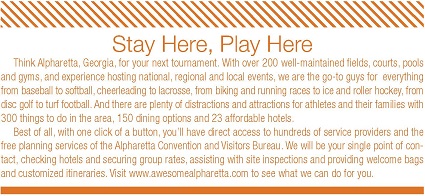 Camelback Ranch–Glendale, which came about as a partnership between Glendale and Phoenix, includes more than 118,000 square feet of Major and Minor League clubhouse space. It has the largest stadium in the Cactus League with a capacity of 13,000, which includes 3,000 lawn seats, 12 luxury suites and a party deck. Fans enjoy the ballpark's modern amenities and design as well as dramatic mountain views.
Camelback Ranch–Glendale, which came about as a partnership between Glendale and Phoenix, includes more than 118,000 square feet of Major and Minor League clubhouse space. It has the largest stadium in the Cactus League with a capacity of 13,000, which includes 3,000 lawn seats, 12 luxury suites and a party deck. Fans enjoy the ballpark's modern amenities and design as well as dramatic mountain views.
Two of the 12 practice fields (four Major League, eight Minor League) are replica fields of the Dodgers and White Sox home ballparks, with exact dimensions of Dodger Stadium and U.S. Cellular Field, respectively. In addition to the ball fields, Camelback Ranch–Glendale also offers picturesque walking trails, landscaped grounds, an orange grove and water features that include a fully stocked lake.
Laredo, Texas
Laredo is about 150 miles south of San Antonio, on the Rio Grande River, and it’s home to a number of facilities that play host to baseball events, including the Border Olympics Baseball Tournament. The new Uni-Trade Stadium, for instance, jointly built by the city and Laredo Baseball Investors LLC, is home to the minor-league Laredo Lemurs, but it also sees plenty of baseball action during the Border Olympics, too.

“Uni-Trade Stadium is state of the art,” says Joel Vazquez, the tourism sales manager for the Laredo CVB, “and it’s a beautiful facility that seats 6,000, with an LED video board, luxury suites, picnic areas, concessions and a press box.”
When it comes to multiple-field baseball facilities, the city can offer the St. James Community Baseball Fields, with three diamonds, and the Slaughter Park Sports Complex, with five diamonds. Both venues offer spectator seating, concession stands, press boxes, restrooms and more.
Have an even bigger event? Laredo’s inventory includes a number of other diamonds that can be pressed into service, including the Jorge Haynes Field at Texas A&M International University and multiple school districts in and around the city, including the nearly 3,700-seat Veterans Baseball Field and the Baseball Stadium at the United Independent School District Activity Complex, which accommodates 2,500.
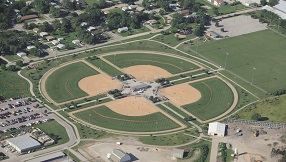
Nebraska’s capital has a lot to offer baseball players and tournament organizers. Among the facilities available are the four diamonds at Fleming Fields and the four at the Optimist Youth Sports Complex, says Derek Bombeck of the Lincoln CVB. In addition, he says, “Sherman Field is undergoing major renovations and will be a key player for us. The hope is it will soon host regional and even national events.” There’s also the Haymarket Park sports complex, in the historic Haymarket area near downtown, home to the University of Nebraska-Lincoln Saltdogs baseball.
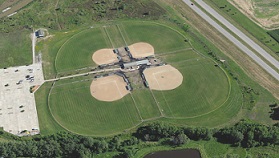
Lincoln has been particularly active when it comes to baseball. In June, the area hosts a Midwest Brawl Baseball Tournament, along with the CWS Brett Bros 18U Wood Bat Invitational. The city also plays host to Nebraska USSSA tournament Slumpbuster events.
Bombeck says with all the baseball activity in Lincoln, city officials have been looking into a new project—a major baseball and softball facility. “We know we can fill more fields,” he says. “Lincoln is a great community, centrally located. You get a lot for your money here.”
Maryland Sports
Aberdeen, Maryland, north of Baltimore, is home to a truly unique baseball venue—The Ripken Experience. Of course, the name Ripken is almost synonymous with baseball and particularly in Maryland, the Ripken family – the late Cal Ripken Sr. and sons Cal Jr. and Bill – are part of the legacy that today continues in the presence of the Aberdeen baseball complex and the Ripken World Series.
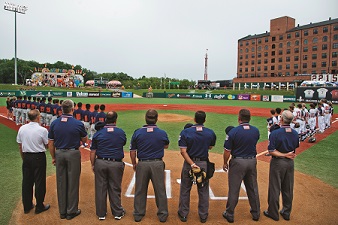
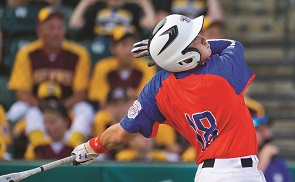
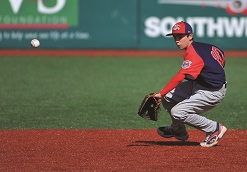
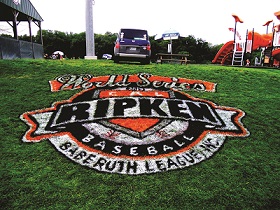
The Ripken Experience offers seven signature fields, including a youth-sized replica of Oriole Park at Camden Yards, along with Wrigley Field, Fenway Park and Memorial Stadium, as well as a full-size replica of Yankee Stadium. There is also an assortment of training areas and amenities, including 15 professional-quality batting cages and a specially designed synthetic turf infield Training Island.
“The Ripken facility is huge in our amateur sports base,” says Terry Hasseltine, executive director of Maryland Sports. “What they’re doing with their tournaments is just phenomenal. The Ripken team sets the standard for amateur baseball in our state.”
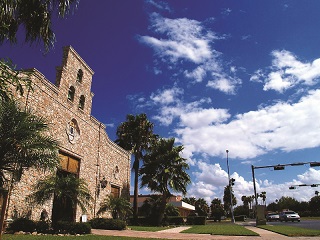
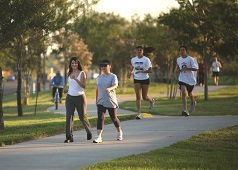
Like all sports, success in baseball is often determined by which team can anticipate the best. The same can be said about the CVB and tourism team in McAllen, which is all about anticipating growth and building for the future. Recently, the city passed a bond issue to fund construction of a premier 17-diamond complex on 56 acres, with all the modern amenities of the newest baseball parks. (The complex includes a Miracle Field, with a cushioned, rubberized, flat surface, suitable for wheelchair players and players with special needs.) The new complex is expected to be completed in the fall of 2015.
“This new complex will service the growth of our baseball program and allow us to attract more tournaments,” says Robert Lopez, the director of convention and sports tourism sales for the McAllen CVB. “Right now, with limited fields, we have mainly local play. But our baseball program is growing, as is our population.” McAllen is at the southern tip of Texas, on the Rio Grande bordering Mexico. “We’re also hoping that with our proximity to Mexico, we’ll host many international tournaments with teams from Mexico.”
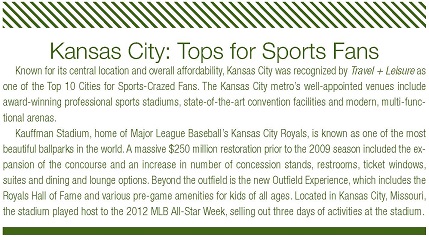 Helping to spur the growth in sports facilities and sports tourism in McAllen is the fact that the city will host the 2016 and 2017 Texas Amateur Athletic Federation Games, so politicians and city officials all rallied to the call to expand and build new sports venues. This fall McAllen will open an 11-field soccer complex, followed by an 18-hole disc golf course and a motocross park. After completion of the baseball park, the city will open a new six-field softball complex (doubling the number of softball fields in town).
Helping to spur the growth in sports facilities and sports tourism in McAllen is the fact that the city will host the 2016 and 2017 Texas Amateur Athletic Federation Games, so politicians and city officials all rallied to the call to expand and build new sports venues. This fall McAllen will open an 11-field soccer complex, followed by an 18-hole disc golf course and a motocross park. After completion of the baseball park, the city will open a new six-field softball complex (doubling the number of softball fields in town).
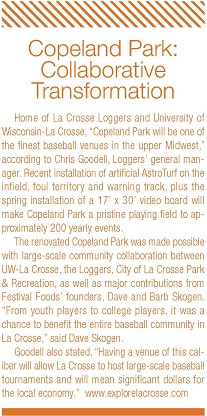 North Myrtle Beach, South Carolina
North Myrtle Beach, South Carolina
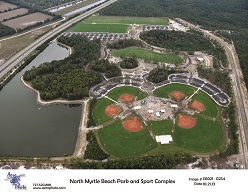
The new Park and Sports Complex is a “full-service park,” he adds, complete with concession stands, awnings over the bleachers for spectators, misting fans in the dugouts, bullpens, batting cages and a warm-up area. Two months before the March opening, there were already about 50 baseball and softball events booked for the complex in 2014. Up until this newest complex, the baseball needs in the area were ably served by the Central Park facility, which has three diamonds and over the years, has seen plenty of youth baseball action.
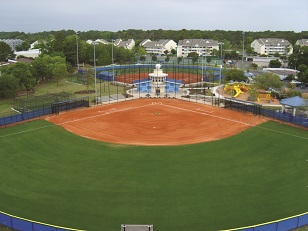 “Because we’re a vacation destination here in North Myrtle Beach, we can bring in events with even 100 teams with no problems,” Gibbons says. “And for some of the largest events, we partner with the City of Myrtle Beach. Teams, tourney organizers, parents and players want to go somewhere where there are other things to do, too, especially for kids. When event organizers come to our area, they work with the local Chamber of Commerce, which does a tremendous amount of legwork to help them find the perfect accommodations.”
“Because we’re a vacation destination here in North Myrtle Beach, we can bring in events with even 100 teams with no problems,” Gibbons says. “And for some of the largest events, we partner with the City of Myrtle Beach. Teams, tourney organizers, parents and players want to go somewhere where there are other things to do, too, especially for kids. When event organizers come to our area, they work with the local Chamber of Commerce, which does a tremendous amount of legwork to help them find the perfect accommodations.”
North Platte/Lincoln County, Nebraska.
The centerpiece for baseball in North Platte is the historic Bill Wood Field, which was built in 1956 and was home to a Cleveland Indians farm team. “There is a lot of great history with Bill Wood Field,” says Lisa Burke, the executive director of the North Platte/Lincoln County Visitors Bureau. The field has in recent years undergone renovations and improvements, adding and updating amenities for both players and spectators.
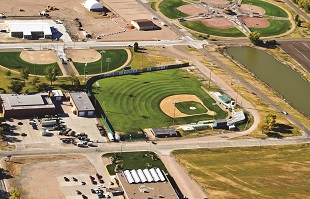
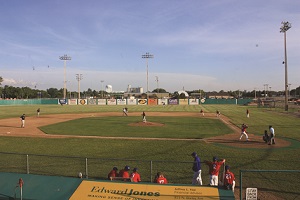 “It’s a beautiful field,” adds Burke. “We’ve hosted a lot of Class A state tournaments and regional tournaments at Bill Wood, with plans to do more. For many of the bigger baseball events, we get a lot of Omaha and Lincoln teams here, and they just rave about how awesome the field is.” Some of the larger events also utilize the seven other baseball diamonds in the area.
“It’s a beautiful field,” adds Burke. “We’ve hosted a lot of Class A state tournaments and regional tournaments at Bill Wood, with plans to do more. For many of the bigger baseball events, we get a lot of Omaha and Lincoln teams here, and they just rave about how awesome the field is.” Some of the larger events also utilize the seven other baseball diamonds in the area.
The CVB has a competitive incentive program to help offset the costs of putting on a tournament, according to Burke, and there is very strong support in the community for baseball and other sports events. “The local baseball group here is well-organized and very easy to work with.” North Platte itself has more than 1,000 hotel rooms, and is easy to reach on I-80.

